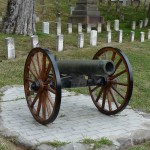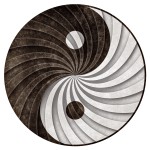Typically on Memorial Day I engage in activities that welcome in the summer. My family uses the extra day to ready our family cabin for summer visitors, and/or I may attend a neighborhood barbeque. This summer was different. I stayed home, but then when the Monday holiday dawned and was cloudy and drizzly, my husband and I decided to do something we had never done before. The greyness of the day seemed to dictate that we participate in a somber activity, so we chose to attend Memorial Day services at our local cemetery. Mountain View cemetery is quite well known in Oakland. Designed by the designer of Central Park, Frederick Olmsted, Mountain View Cemetery is the final resting place for local luminaries such as Julia Morgan, Bernard Maybeck, Henry Kaiser…and many many more. Veterans from all of the wars are also interred at Mountain View…dating back to the Civil War. I have always felt that this is a very sacred place, very holy. I felt this as I sat down for the ceremonies on Memorial Day.
What I realized, as I listened to members of various branches of the service speak in behalf of soldiers lost in battle, is that the living always owe a debt of gratitude to the dead. Its not that I glorify war—because I certainly don’t. I have my own political views on the “rightness” or “wrongness” of particular wars. However, it seems to me that regardless of anyone’s political view, these soldiers put their lives on the line for what they felt to be a “greater” cause.. There is honor in that, regardless of any judgment about that cause. I was happy to honor all of the soldiers, and felt badly that I had not taken time to do this before.
At the end of the ceremony, one of the Mountain View docents, a wonderful storyteller and newspaper man named Dennis Evanosky gave us a tour of the Civil War section of the Cemetery. Dennis regaled us with stories about how these Civil War veterans ended up being buried in Oakland. They had all survived the Civil War and then went on to lead colorful and adventuresome lives, making their way across the country, being involved in local politics, marrying their sweethearts,….and then finally their lives were over..and they are buried here….right beneath where we were standing.
What really impressed me about this storytelling was that Dennis had fired up my imagination…and I was there! I was imagining the lives of these people and it was real. He was making it real and alive and teaching all of us the value and the joy of remembering the details in the lives of people long gone.
So what I’m thinking now is that I’m connected to all these people who were brought alive by Dennis. They are all in some way my ancestors..if not directly then in some way indirectly. After all did we not share the same air, the same land, the same world? In short, I would not be the same person in the exact same world as I am right now…if it were not for all of them. They are all part of the same grand tapestry that I am a part of, which actually combines all of our stories into one grand story
So my intention now is to remember to remember each year, as well as throughout the year. As I take my meditation walks through the beautiful Mountain View gardens, I will think of the stories of the people who are buried here and feel my connection to all of them.





